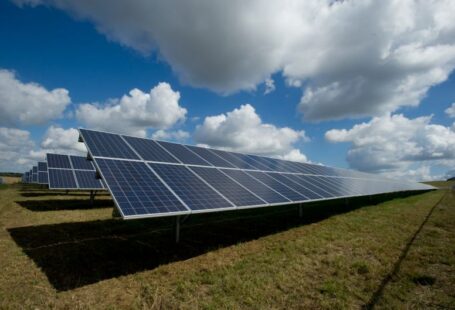Solar energy has emerged as a sustainable and eco-friendly alternative to conventional sources of energy. In Indonesia, a country known for its rich biodiversity, the adoption of solar power has raised concerns about its potential impact on the environment. Understanding the implications of solar energy on Indonesian biodiversity is crucial for ensuring a balanced approach to energy production and conservation efforts.
Solar Energy Development in Indonesia
Indonesia has been making significant strides in promoting renewable energy sources, with a particular focus on solar power. The country’s abundant sunlight makes it an ideal location for solar energy production. The government has set ambitious targets for increasing the share of renewable energy in the energy mix, including solar power. As a result, there has been a rapid expansion of solar energy projects across the archipelago.
Impact on Wildlife Habitat
One of the primary concerns regarding the expansion of solar energy infrastructure in Indonesia is its potential impact on wildlife habitats. Solar power plants require large land areas for installation, which can lead to habitat fragmentation and loss of biodiversity. In some cases, solar energy projects have encroached upon critical habitats, leading to the displacement of wildlife species.
To mitigate these impacts, it is essential to conduct thorough environmental assessments before the development of solar projects. Identifying sensitive areas and implementing measures to minimize habitat disruption can help preserve biodiversity while harnessing the benefits of solar energy.
Conflict with Protected Areas
Indonesia is home to a diverse range of protected areas, including national parks and wildlife reserves, aimed at conserving its unique flora and fauna. The development of solar energy projects in close proximity to these protected areas can pose a threat to their ecological integrity. Increased human activity, infrastructure development, and noise pollution associated with solar plants can disrupt wildlife behavior and migration patterns.
Balancing the need for renewable energy generation with conservation objectives requires careful planning and coordination between stakeholders. Engaging local communities, conservation organizations, and government agencies in the decision-making process can help identify suitable locations for solar projects that minimize conflicts with protected areas.
Opportunities for Biodiversity Conservation
While the expansion of solar energy infrastructure in Indonesia presents challenges to biodiversity conservation, it also offers opportunities for positive outcomes. Solar power has the potential to reduce greenhouse gas emissions, combat climate change, and promote sustainable development. By transitioning to clean energy sources, Indonesia can mitigate the impacts of climate change on its ecosystems and species.
Moreover, integrating biodiversity considerations into the planning and design of solar projects can enhance their environmental performance. Implementing measures such as reforestation, habitat restoration, and wildlife corridors can help offset the negative impacts of solar energy development on biodiversity. Additionally, promoting research and innovation in renewable energy technologies can lead to more sustainable practices that benefit both the environment and the economy.
Conclusion
The rapid expansion of solar energy in Indonesia has the potential to transform the country’s energy landscape while safeguarding its rich biodiversity. By adopting a holistic approach that considers the ecological implications of solar projects, Indonesia can strike a balance between energy development and conservation priorities. Collaborative efforts between government, industry, and civil society are essential for ensuring that solar energy contributes to a greener and more sustainable future for Indonesia and its diverse ecosystems.





